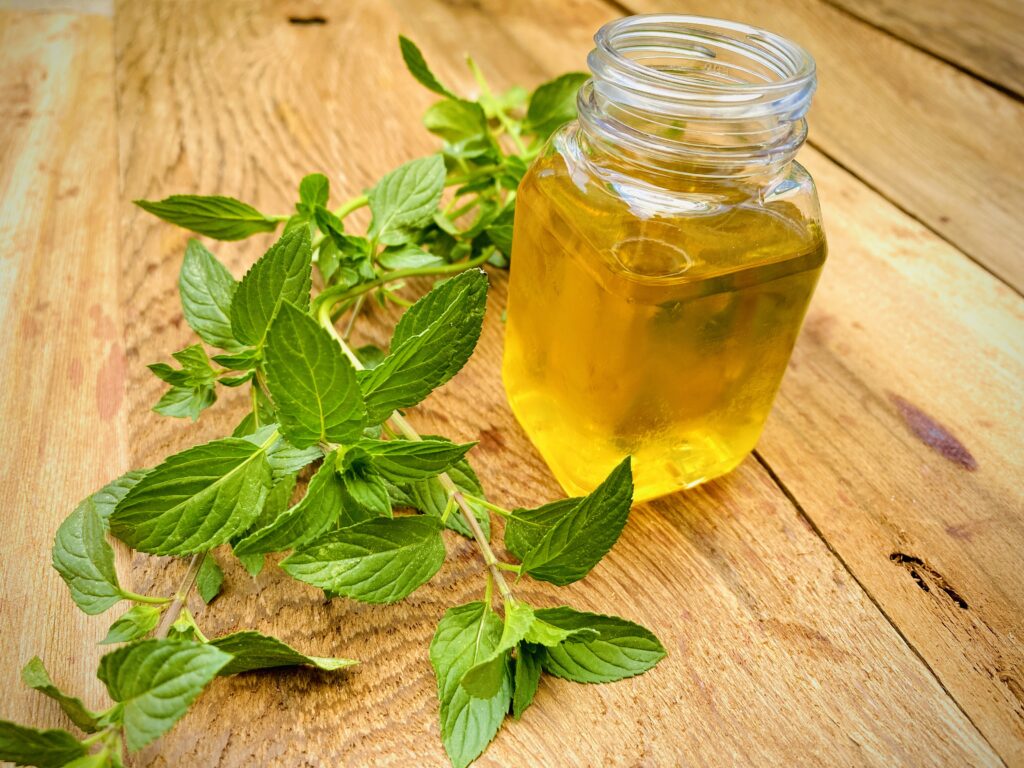
A couple weeks ago we talked about making glycerites from fresh pomegranate fruit! We applied heat and let the extraction run for several hours without a lid. This allowed water to evaporate and ensured the glycerin content of the final product was at least 60% which will make the glycerite shelf stable.
There is, however, another way to make glycerites and, in my opinion, it’s even more exciting! This second method, called a Sealed Simmer, when paired with aromatic fresh herbs, can even extract the essential oils and other volatile compounds. Our glycerite won’t be as strong as pure essential oils, and can’t be used as a substitute for fragrance/essential oils in soaps, or other handmade cosmetics, but it’s still pretty cool!
Now look, I adore fresh thyme, homegrown dill and oregano, fragrant basil, and bright lemon balm. But what I have the most of… what I have growing in spades… is peppermint. Because if you have ever made the mistake of planting peppermint you know that once it takes off there is no stopping it.
I’m always trying to find ways to use the fresh mint that grows around my shop, so when it came time to show you guys how to make a fresh sealed simmer glycerite, mint was the clear winner.
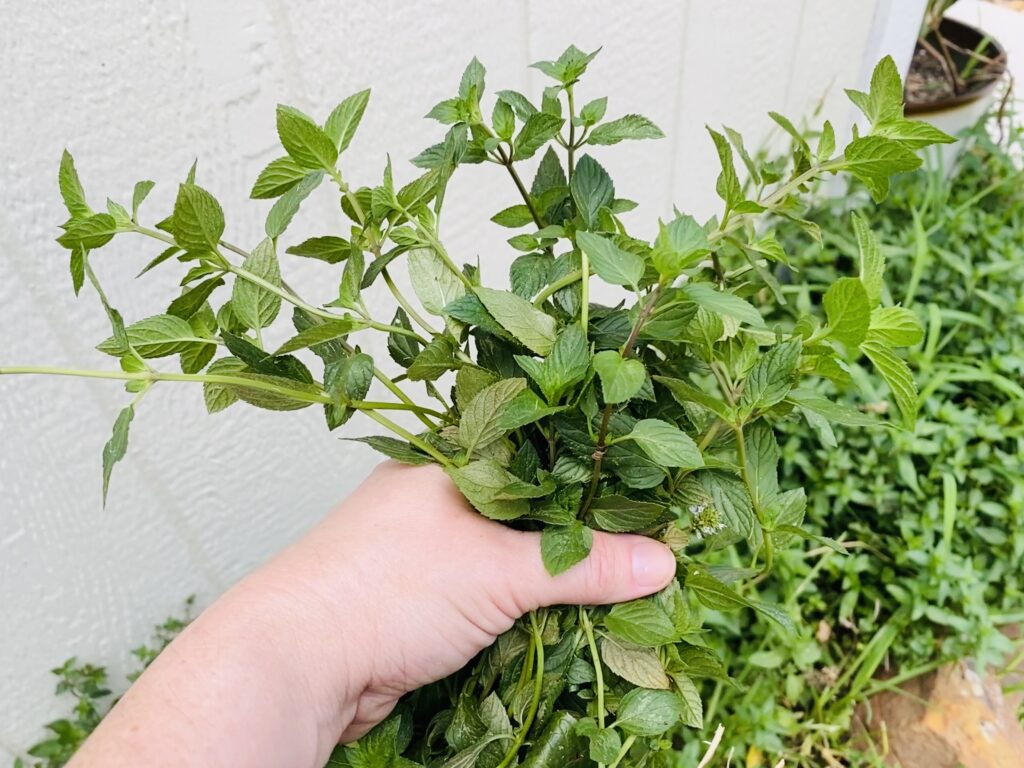
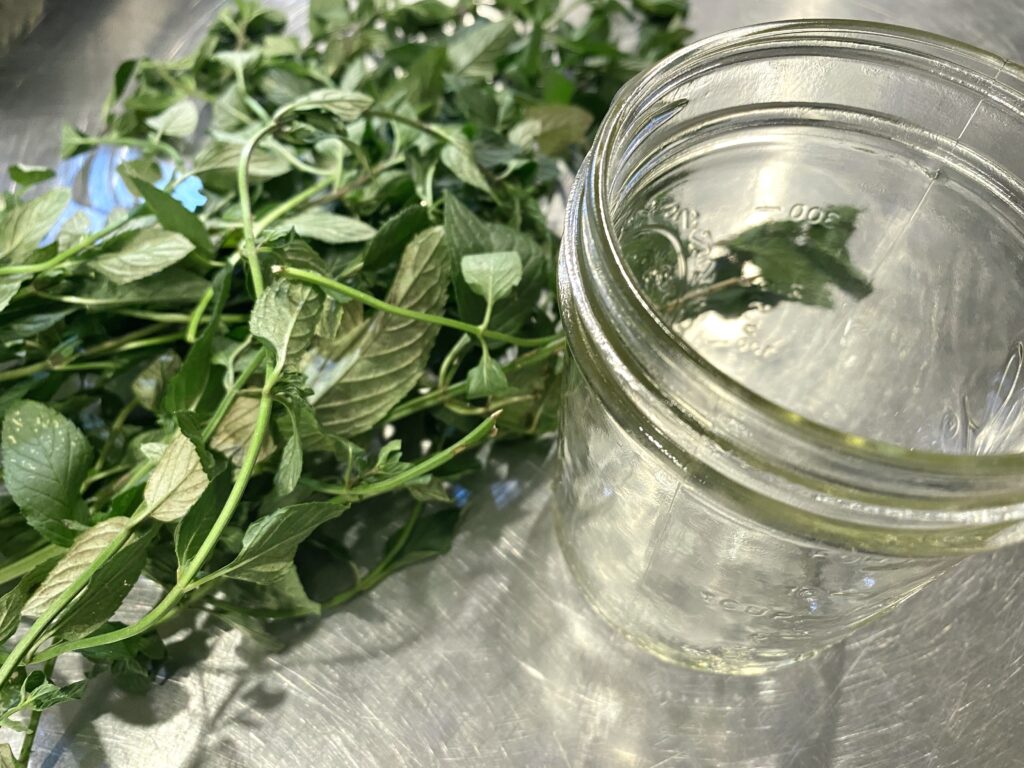
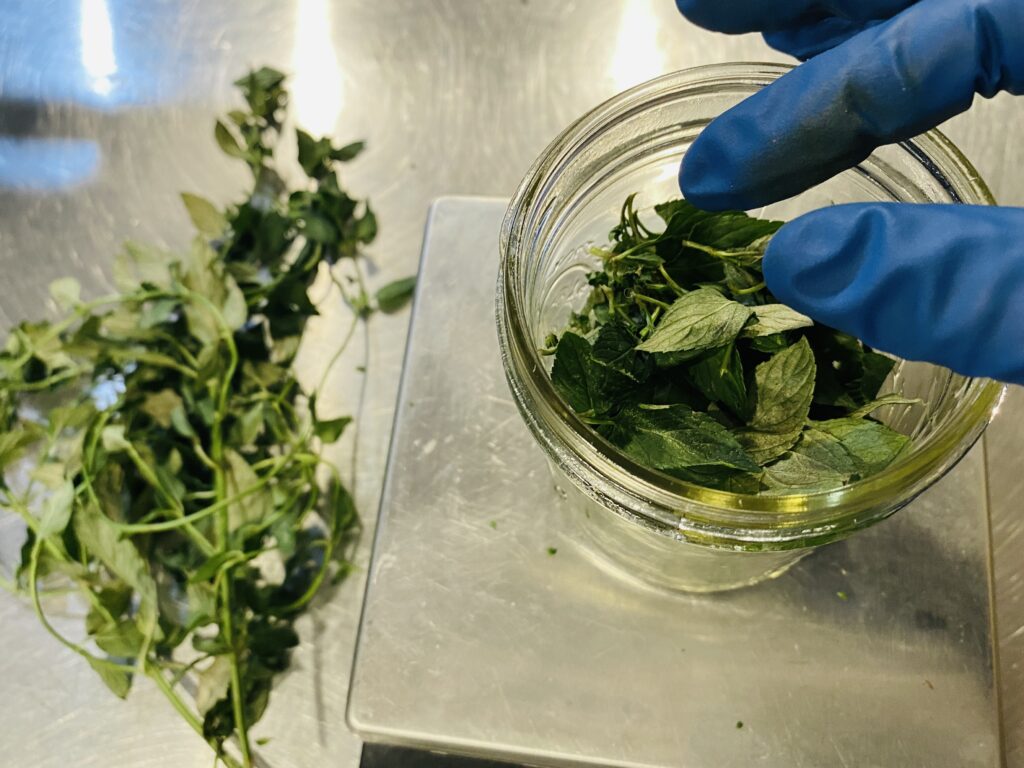
First I sanitized and sterilized my work area, then went outside to pick a handful of mint. After rinsing it, and patting it dry with paper towels, I started adding it to my small canning jar. I added as much mint as I could fit into the jar, about 20 grams, (but you could use even more!) and left about 1 inch of space between the plant matter and the top of the jar.
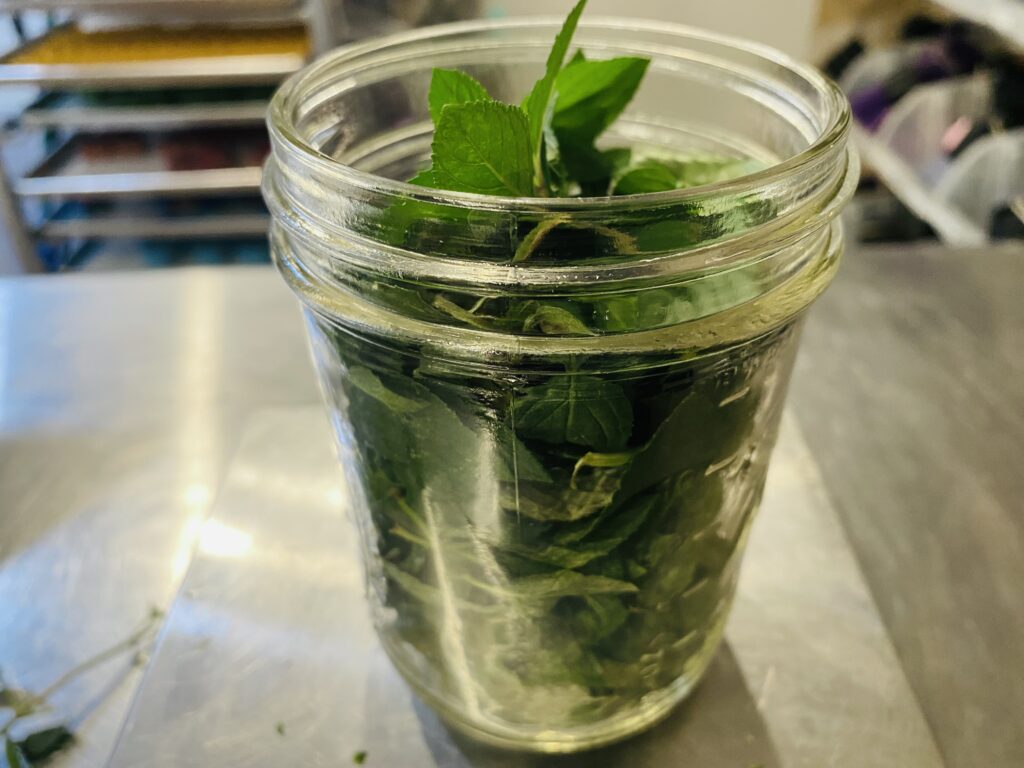
For glycerites, our end goal is to have a glycerin content of at least 60% to create a shelf stable product. For this sealed simmer we will use a mixture of 70% glycerin and 30% distilled water. If you remember, in the pomegranate glycerite we didn’t add water, but that’s because we knew the seeds and juice itself would create a water content on their own. With dry, aromatic herbs we don’t have much (if any) water content, and while glycerine is excellent at extracting volatile compounds, adding water helps to enhance the efficacy of the process.
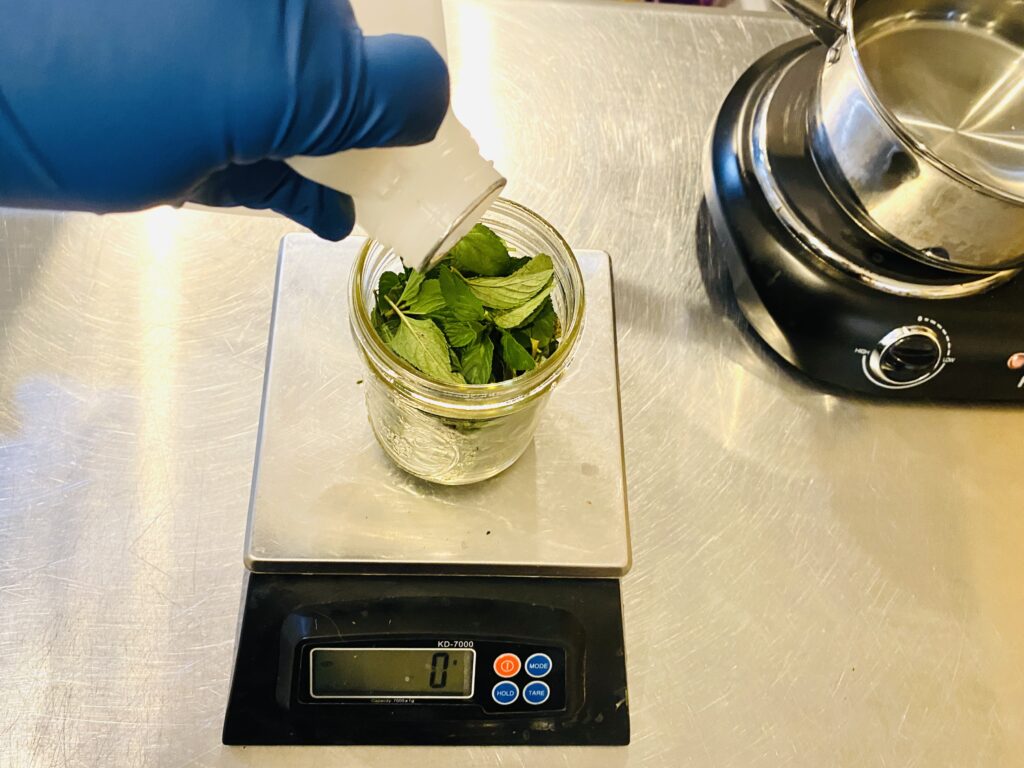
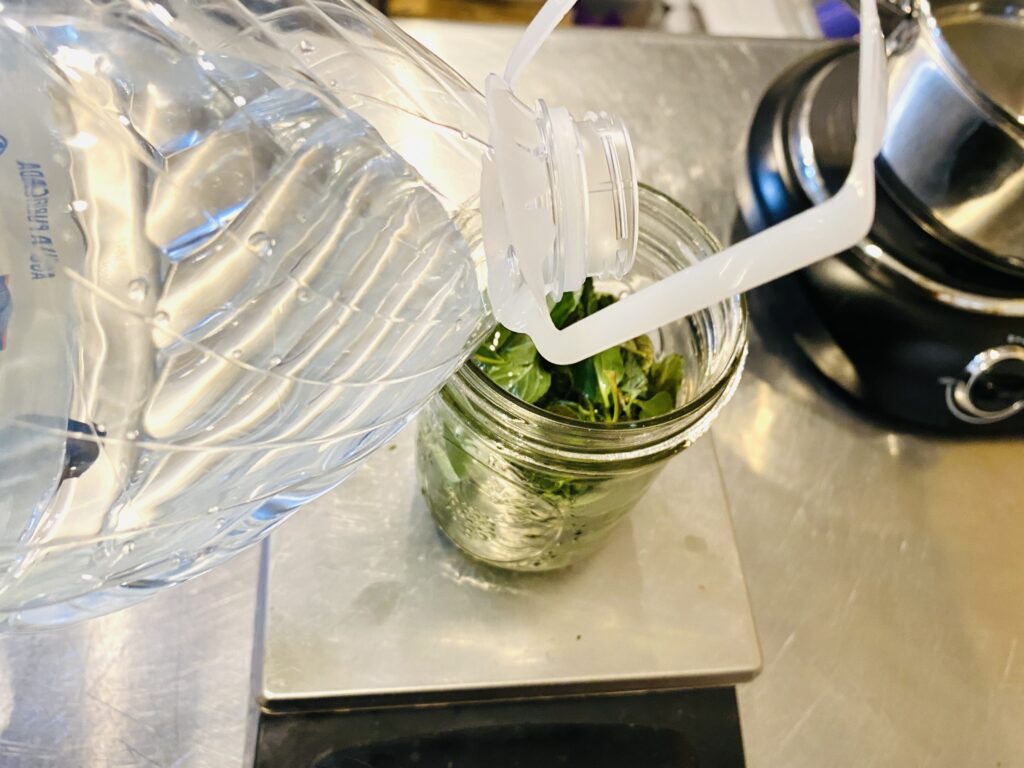
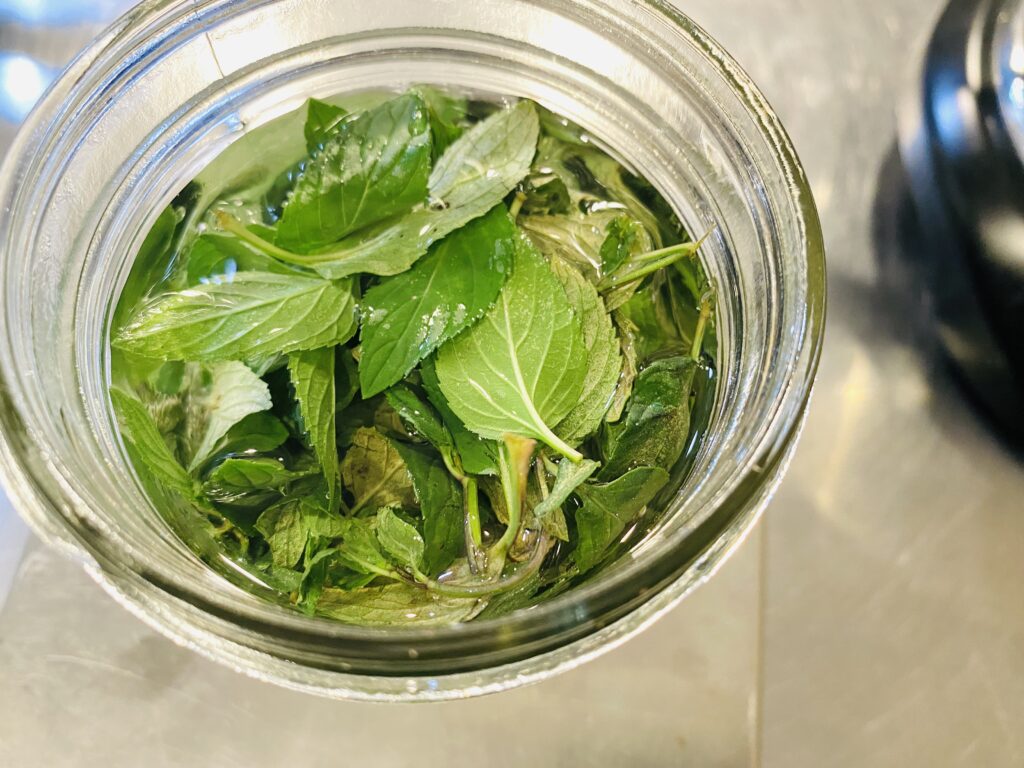
Once my jar was packed with fresh peppermint I added 287 grams of glycerin and 123 grams of distilled water for a total of 410 grams menstruum (the liquids doing the extraction). I placed a lid on the jar and sealed it tightly.
Next I placed my sealed jar into a simmering water bath. You could also use a steam canner, but I don’t have one! I allowed the jar to process in the boiling water for 15 minutes then removed it from the heat and set it aside until it was cool enough to safely strain.
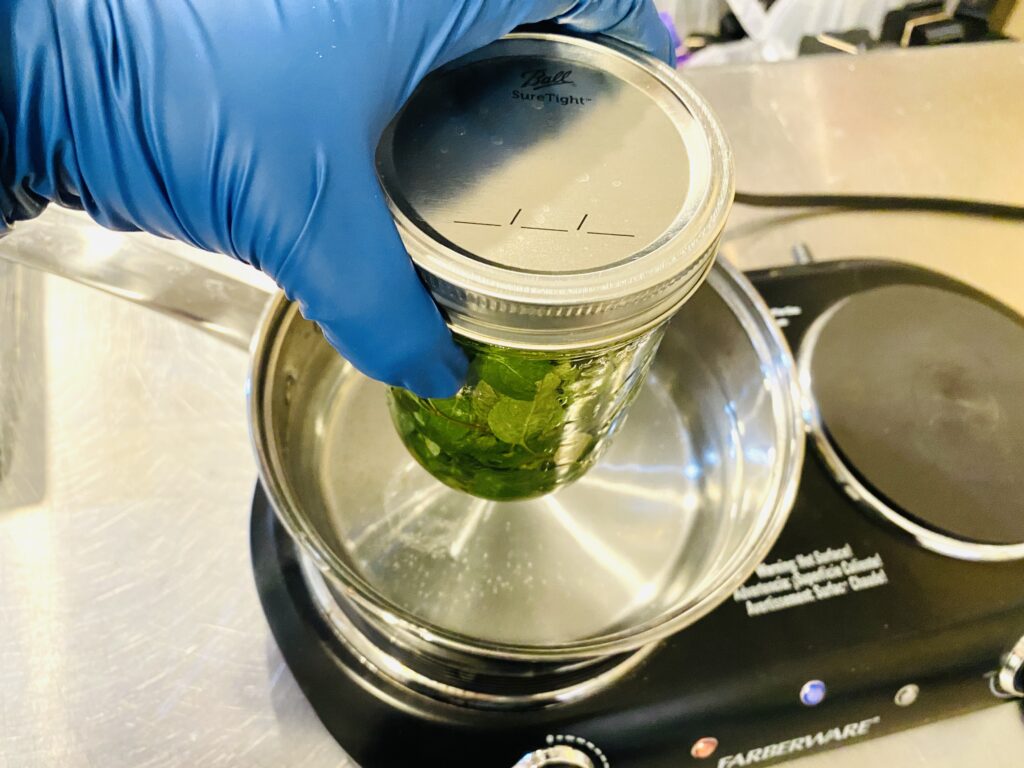
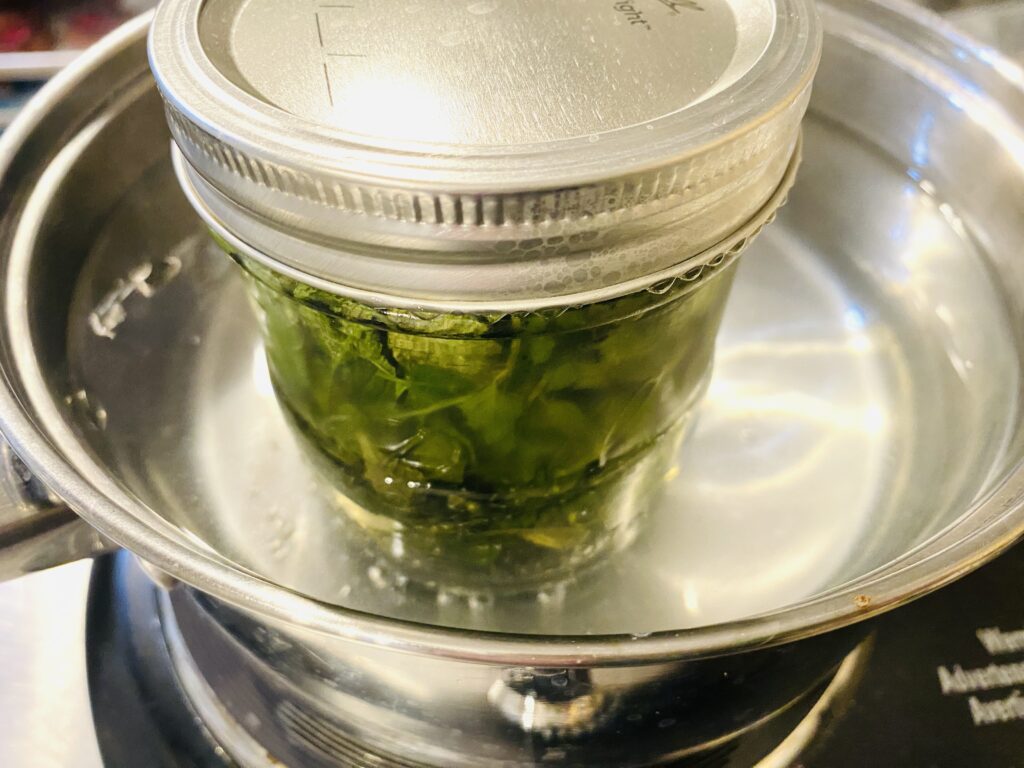
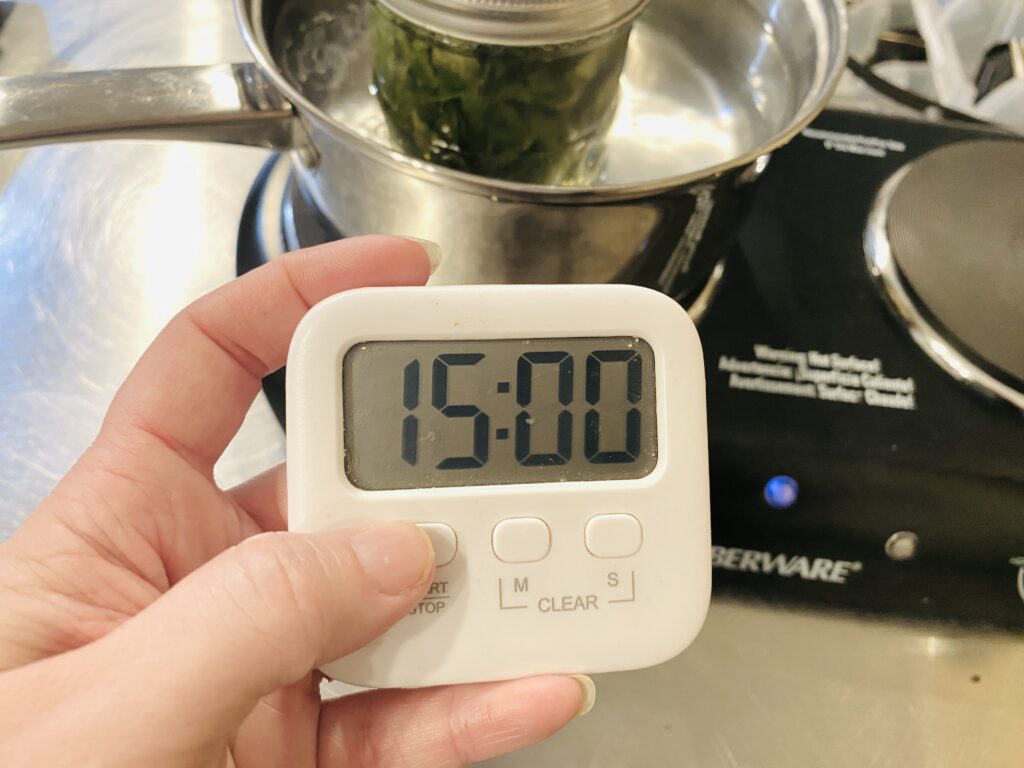
Just to prove that you don’t need a fancy vegan milker like I used in the pomegranate post, I went back to my roots and used a simple cheesecloth! Make sure to wear gloves so you can squeeze all that leftover marc (plant material)! We want every last drop of herbal glycerin goodness!
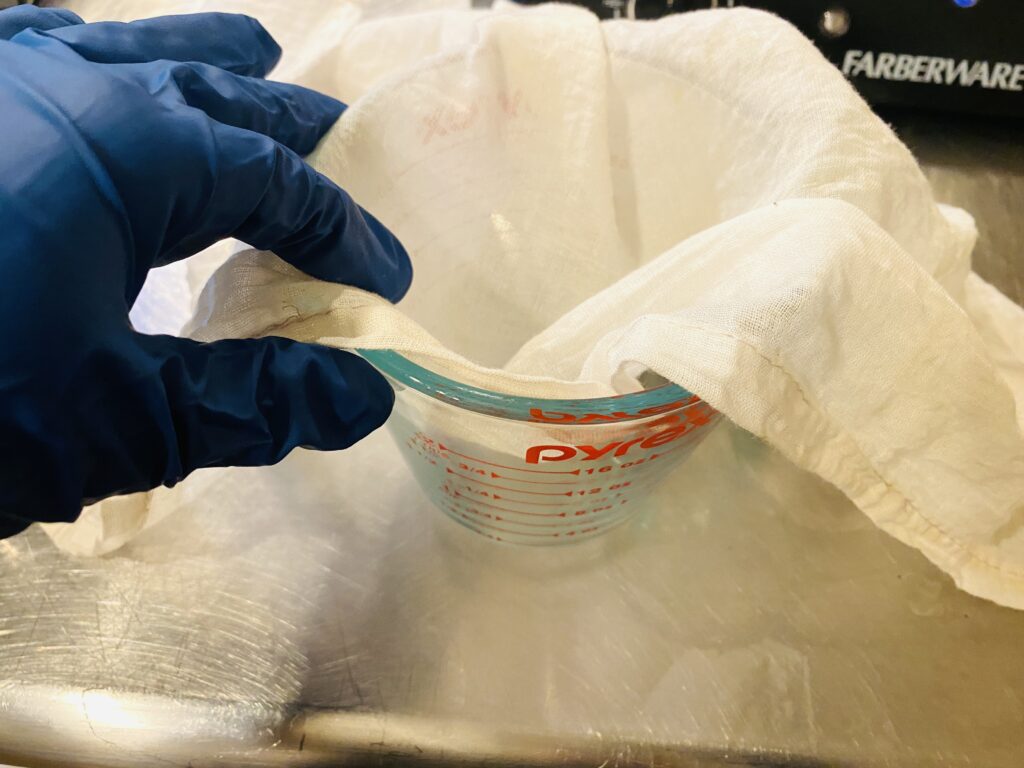
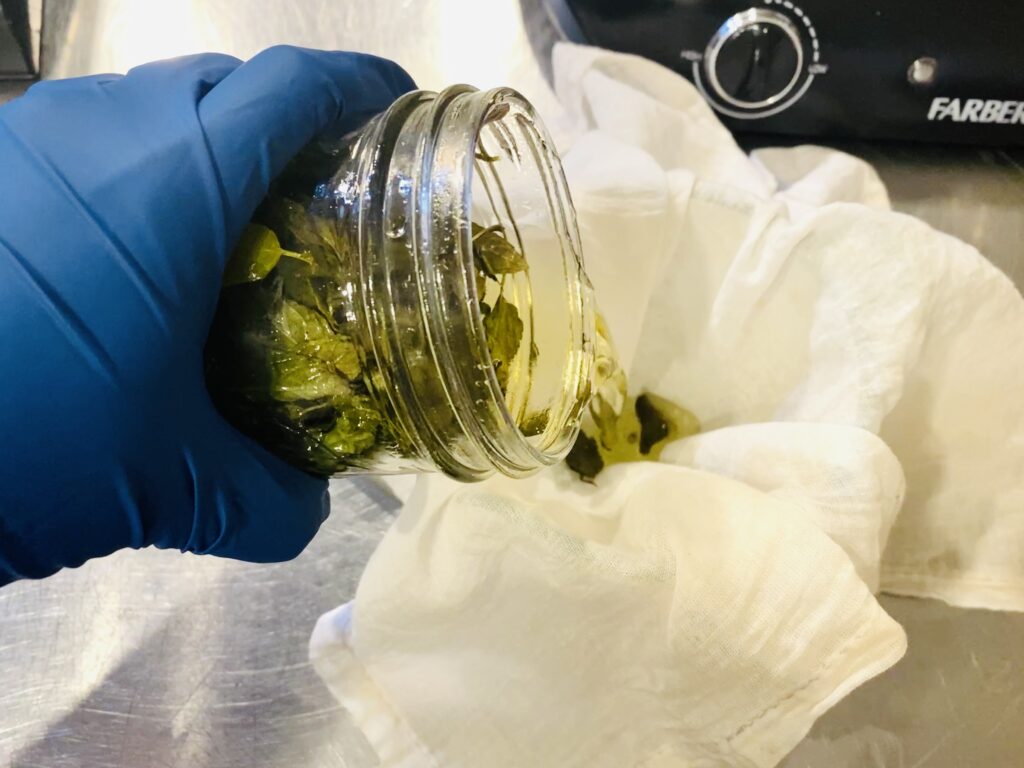
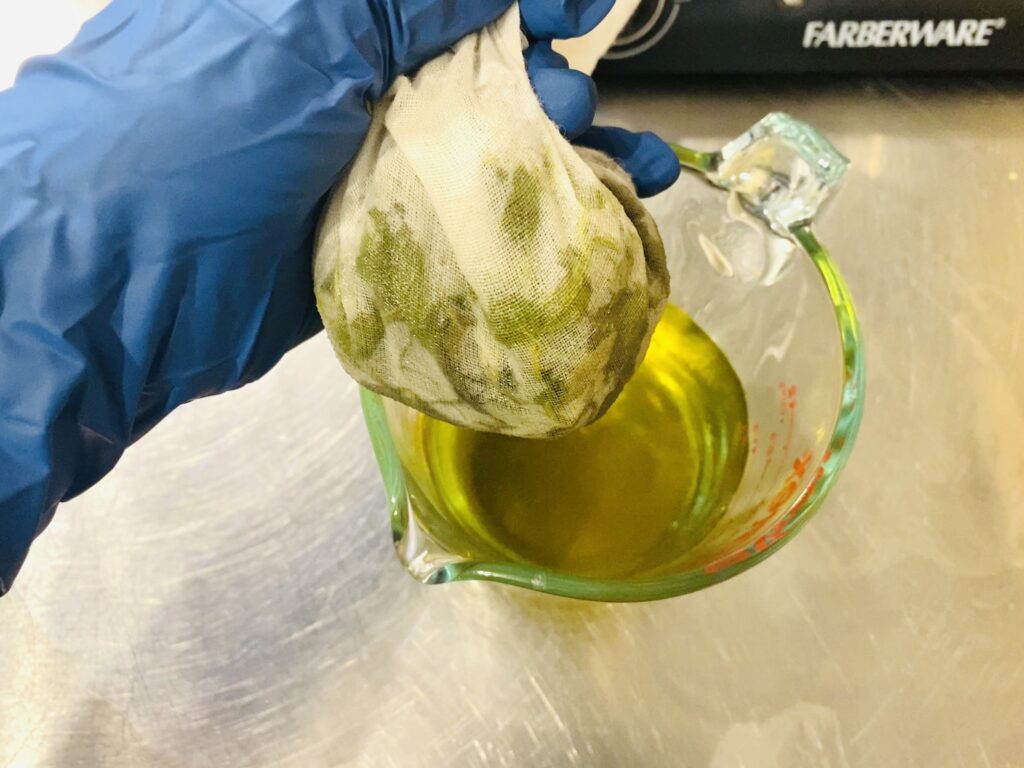
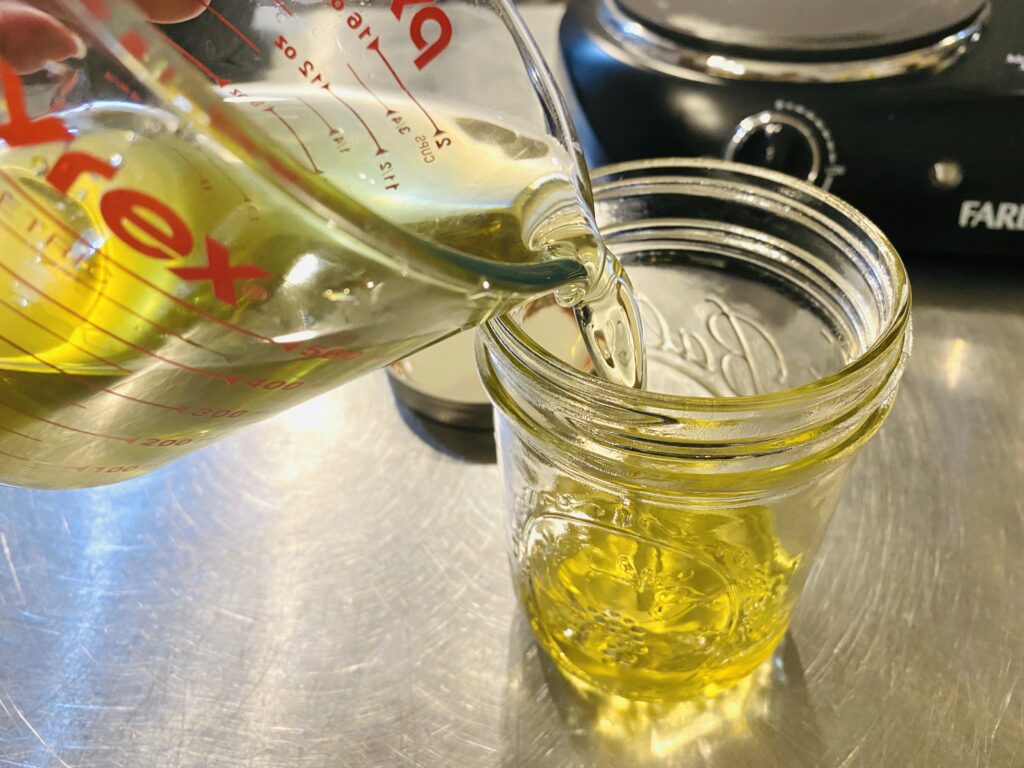
I transferred the glycerite to a clean canning jar and added a label. I’ll use this all by the end of winter and probably wish I had more. For now I used this peppermint glycerite in a super refreshing shampoo and conditioner bar set. The peppermint adds just the slightest hint of tingle–not too overpowering–and I’m excited to test it in some deep conditioners I’ve been working on!
Have you tried making a glycerite yet? They can be used in any cosmetic product that calls for glycerin, and create such a nice touch to any formulation! We have so many recipes you could pair this with, and we’d love to know what you’ve been making. Join our Facebook support group and show us what you’ve been up to–we love to see it!

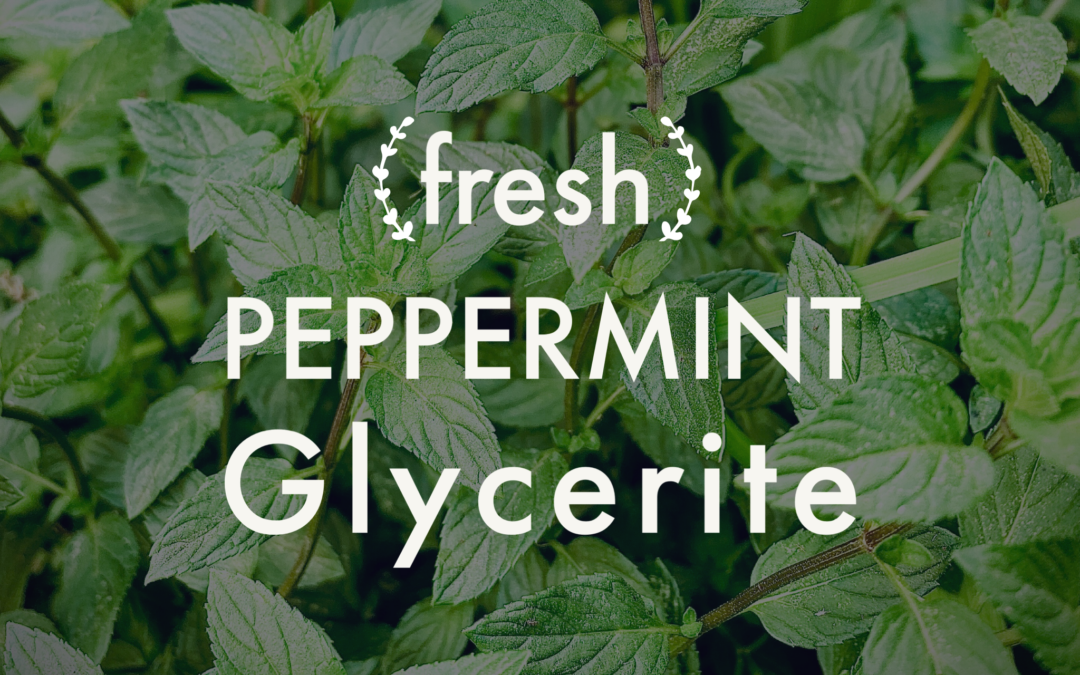
Oh this sounds like it would be lovely. My mom was a hairdresser and we were always trying new products at home. I remember the first time I felt that tingle was using a product called TRI. And you’re right. Mint does take over. My grandma had it in the garden and would make tea with it when we had stomachaches. Thanks for the throwback memories.
Haha, yes mint is unstoppable! The gentle tingle is lovely for hair, but I feel like using the EO is just too strong for my liking. This was a great alternative 🙂
This looks pretty cool and totally accessible. Like you, I have plenty of mint to give this a try! One quick question – is the menstruum a combination of alcohol and water as a solvent and means of extraction? And, if so, are we talking vodka or Isopropryl alcohol (and at what strength?)?
Thanks!! I’m looking forward to trying this!
If I just need to go find the pomegranate post, say the word!
Hi Shari! That’s a great question! Menstruum is any solvent, so for this project it is the glycerin and water. You definitely don’t need to go read the pomegranate post, but it’s linked in the top if you’re interested!
Oh, got it! Thank you so much for responding!! Have a fantastic day!!
What else can this be used for other thank bath and body? I have so much mint and this looks Devine.
Actually you can use glycerites the same way you would use syrups. It’s especially helpful for diabetics who can’t have sugar (or other people who are avoiding sugar!)… a peppermint glycerite would be soothing for sore throats or upset stomachs 😊
I’ve been trying to find ways to boost my leave in spray that I use on my hair. I was going to make a rosemary and peppermint tea to replace the plain water but I might add a glycerite instead.
I bet that would be lovely! Let us know how it goes!